 History
History  History
History  Animals
Animals Ten Times It Rained Animals (Yes, Animals)
 Mysteries
Mysteries 10 Devastating Missing Child Cases That Remain Unsolved
 Creepy
Creepy 10 Scary Tales from the Middle Ages That’ll Keep You up at Night
 Humans
Humans 10 One-of-a-kind People the World Said Goodbye to in July 2024
 Movies and TV
Movies and TV 10 Holiday Movies Released at Odd Times of the Year
 Politics
Politics 10 Countries Where Religion and Politics Are Inseparable
 Weird Stuff
Weird Stuff 10 Freaky Times When Famous Body Parts Were Stolen
 Miscellaneous
Miscellaneous 10 Interesting Things Manufacturers Stopped Making and Why
 Gaming
Gaming 10 Funny Tutorials in Games
 History
History 10 Desperate Last Stands That Ended in Victory
 Animals
Animals Ten Times It Rained Animals (Yes, Animals)
 Mysteries
Mysteries 10 Devastating Missing Child Cases That Remain Unsolved
Who's Behind Listverse?

Jamie Frater
Head Editor
Jamie founded Listverse due to an insatiable desire to share fascinating, obscure, and bizarre facts. He has been a guest speaker on numerous national radio and television stations and is a five time published author.
More About Us Creepy
Creepy 10 Scary Tales from the Middle Ages That’ll Keep You up at Night
 Humans
Humans 10 One-of-a-kind People the World Said Goodbye to in July 2024
 Movies and TV
Movies and TV 10 Holiday Movies Released at Odd Times of the Year
 Politics
Politics 10 Countries Where Religion and Politics Are Inseparable
 Weird Stuff
Weird Stuff 10 Freaky Times When Famous Body Parts Were Stolen
 Miscellaneous
Miscellaneous 10 Interesting Things Manufacturers Stopped Making and Why
 Gaming
Gaming 10 Funny Tutorials in Games
10 Uplifting Stories To Get You Through The Week (10/7/18)
If you are feeling a bit down, this list should work as the perfect pick-me-up. Here, we only look at positive and inspirational stories that made the news over the last week. If you prefer something with an oddball twist to it, you can try this.
This week, we look at individuals who did their best to make the world a slightly better place. We have a man who lifted one million kilograms for charity, a doctor who went the extra mile for his patient, and a little girl who pulled an ancient sword out of a lake.
We also examine some new technologies that give us reason to be hopeful for the future. There is a network that could allow us to communicate with each other just by using our brains. There’s also a “virtual unraveling” technique that could help us read damaged historical scrolls thought lost forever.
10 A Million Reasons To Care

A man with cystic fibrosis lifted 1 million kilograms (2.2 million lb) of weight in under a day to raise awareness and money for the condition.
Josh Llewellyn-Jones from Cowbridge, Vale of Glamorgan, Wales, has been exercising and competing in sports since he was young to help minimize the effects of his disease. He also started a charity called CF Warriors to help children suffering from cystic fibrosis adopt an active lifestyle and live a fuller life. To bring attention to his cause, the 31-year-old set for himself a gargantuan task—to lift a total of one million kilograms in less than 24 hours.
Llewellyn-Jones’s exercise routine consisted of bench presses, squats, bent over rows, and leg presses of various weights and reps. He repeated it over and over again, with short breaks to eat and treat muscle soreness. The athlete finished the challenge in 22 hours and 10 minutes, lifting around 700 kilograms (1,540 lb) per minute.[1] Afterward, he said he was so sore that it took him five minutes to walk downstairs.
9 A Trip Down Memory Lane

A nursing home in Bingley, England, recreated a section of the town as it was in the 1950s to help its patients suffering from dementia.
A common problem among people with dementia is that their short-term memory is impaired, but their long-term memory isn’t. They often think they are back in their twenties or thirties and try to do the things they did in their youth. Being able to take a trip down memory lane, metaphorically, is considered an effective form of treatment called reminiscence therapy. In Bingley, people with dementia can do it literally.
The Five Rise Nursing Home built an artificial street with impressive attention to details. It includes a grocery store, a barbershop, and a post office, complete with period-accurate weighing scales. An authentic car and motorcycle are parked on the street, and the bus station even has the accurate routes listed on the sign.[2]
The 1950s motif is continued inside the nursing home, which is decorated with historically accurate objects and photographs. Meanwhile, the activities center has been made to look like a 1950s pub.
8 Why Elephants Have Cracked Skin
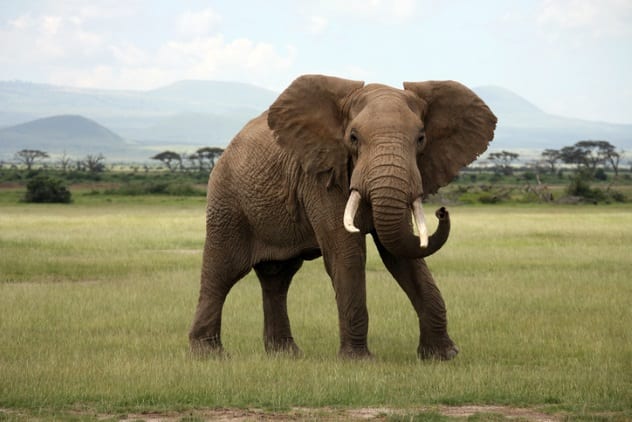
A new study published in Nature Communications sheds light on why elephants have cracks in their skin. The wrinkles help the large animals regulate their temperatures and ward off parasites.
Swiss researchers from the University of Geneva (UNIGE) and the Swiss Institute of Bioinformatics (SIB) studied multiple skin samples and concluded that they have three characteristics which aid in the cracking of the epidermis: They are hyper-keratinized, shedding-deficient, and grow on a lattice of millimetric elevations of the skin. These three traits are enough to cause sufficient mechanical bending stress to lead to true cracking. This is opposed to other animals like the crocodile, whose skin simply creates a folded pattern.
The main goal of this unusual physical trait is to regulate temperature. African elephants don’t have sweat or sebum glands to stay moist in a dry environment. To prevent overheating, they often bathe in mud or spray water. The cracks help the body retain up to ten times more liquid than if the skin was a flat surface.[3] As an added bonus, the layer of retained mud also protects elephants from parasites and solar radiation.
Next up, researchers would like to track the development of the wrinkly skin by studying a newborn elephant. That way, they can see exactly when the cracks start to form, where they appear first, and how long the process takes.
7 The Distinguished Gentleman’s Ride
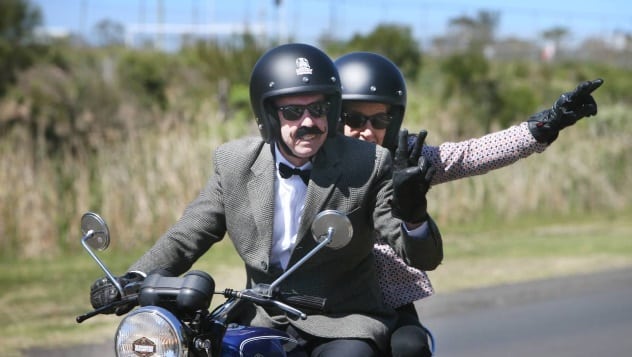
Last Sunday, over 100,000 people donned their most dapper outfits and rode their classic bikes to raise money for prostate cancer and men’s mental health in the seventh annual Distinguished Gentleman’s Ride.
The charity race started in 2012 in Sydney, Australia, when Mark Hawwa was inspired by a photo of Don Draper from Mad Men atop a classic bike while wearing a suit. The first event saw 2,500 people ride across 64 cities. The fundraiser has grown bigger each year. In 2018, over 110,000 riders registered, raising close to $6 million courtesy of donations and sponsors.
Even though the event raises funds for men’s causes and has the word “gentleman” in it, everyone is free to join as long as they stick to the style guide. People have to wear dapper outfits such as silk waistcoats, tailored suits, or tweed jackets.
More restrictive is the line of motorcycles allowed in the event. Only certain classic styles are eligible to partake in the Distinguished Gentleman’s Ride. They include, among others, the bobber, tracker, sidecar, and pre-1970s scooters and choppers.[4]
6 Chi Chi Is Hero Dog Of The Year

Chi Chi was named the 2018 American Hero Dog by American Humane. She is a Golden Retriever who is a quadruple amputee but still managed to successfully become a therapy dog.
Her tale starts off on a sad note. Chi Chi was found in a dumpster in South Korea. She had been bound and left to die inside a trash bag. Animal workers found her and managed to save the dog, even though all four of her limbs had to be amputated above the paws.
Chi Chi’s story was posted on Facebook, where it caught the eye of Elizabeth Howell in Arizona.[5] She adopted the Golden Retriever and fitted her with four prostheses. Her friendliness and gentle nature made Chi Chi perfect as a therapy dog. She spends most of her days assisting injured veterans with their rehab, visiting retirement homes to boost morale, or helping children learn to read.
On top of it all, Chi Chi recently had surgery to remove cancerous tumors, which makes her a cancer survivor as well. Her tale of perseverance won over the American public. At this year’s Hero Dog Awards, Chi Chi received over a million votes. She bested 265 other pooches to earn the distinction of American Hero Dog.
5 Teddy Bear Operation Is Successful
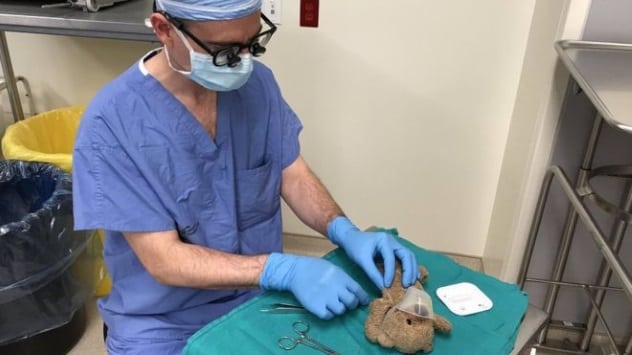
A neurosurgeon in Canada went viral after “operating” on his patient’s teddy bear.
Eight-year-old Jackson McKie suffers from hydrocephalus, a brain condition that causes an accumulation of cerebrospinal fluid. He needed a procedure to repair a shunt which helped drain the excess liquid from his brain. He went to IWK Health Center in Halifax, Nova Scotia. There was Dr. Daniel McNeely, one of Jackson’s primary physicians, who performed the operation.
With Jackson was Little Baby, his teddy bear. The cuddly companion was always by Jackson’s side, although he had seen better days. Therefore, right before going into surgery, the patient asked Dr. McNeely if he could also fix his friend.[6]
Pictures of the doctor’s impromptu surgery went viral online. They depicted McNeely placing an “oxygen mask” on his stuffed patient and fixing a tear in his underarm. Both medical procedures were successful, and the two patients are convalescing together.
4 Historical Scroll Deciphered
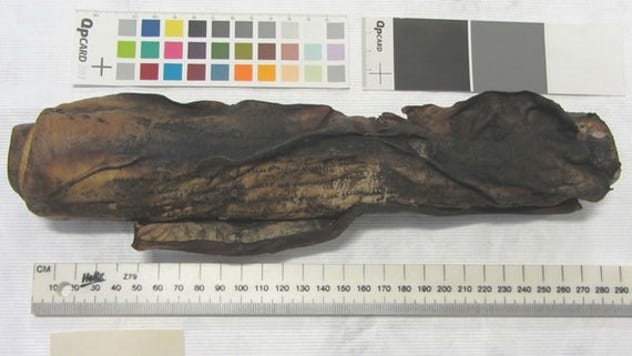
Scientists at Cardiff University are pioneering a technique called “virtual unraveling,” which could be used to examine damaged scrolls which, until now, were considered unreadable. The researchers have successfully deciphered a 16th-century scroll which was severely charred and had its layers fused together.
This is not the first case of virtual unraveling, but it is a new, autonomous approach to the concept that also works on documents with multiple pages.
The scroll in question comes from Diss Heywood Manor in Norwich. It was considered a particularly difficult document to work with because, besides the charring and fusing, it also featured heavy discoloration and creasing in addition to being covered in soot. Physically, it would have been impossible to unravel it without tearing it to pieces.
Even so, researchers were able to use X-ray tomography to create thousands of thin cross sections where the ink would become visible as bright blobs.[7] Their computer model could then piece together all of the sections in the form of a flat representation of a scroll.
The text contained records of the General Court and included land transactions, fines, names of jurors, and disturbances of the peace. The content isn’t as interesting as the proof of concept. Cardiff researchers are hopeful they could use the technique in the future to decipher many other historical documents sitting untouched in archives and museums because they are too fragile.
3 Will Australia Eliminate Cervical Cancer?
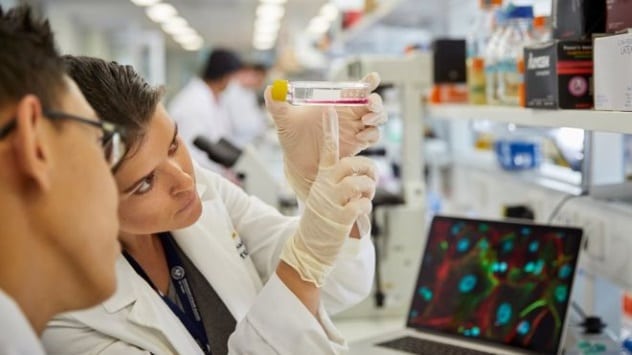
According to a new report published in the Lancet Public Health Journal, Australia is on track to become the first country in the world to effectively eliminate cervical cancer.
The vast majority of cases of cervical cancer are caused by infections with human papillomavirus (HPV). Over the decades, Australia has successfully introduced several programs to fight the disease—first a national screening program in 1991 and then a vaccination scheme in 2007. Currently, the country has a cervical cancer rate of seven per 100,000 people, which is around half the global average.
A predictive model published by the Cancer Council New South Wales says that the rate should drop below six cases per 100,000 people by 2022, officially classifying it as a “rare cancer.”[8] If the trend continues, the rate could reach four in 100,000 by 2035.
Researchers believe that, at that point, cervical cancer would be so uncommon that it would be considered eliminated. Currently, there is no official threshold set by the World Health Organization for this criterion. Even so, when they do set it, Australia is likely to be the first country to reach it.
2 Enter The BrainNet

Neuroscientists from the University of Washington and Carnegie Mellon University have developed a network which can link three brains together and allow them to play Tetris.
Right off the bat, let’s just specify that this is not mind reading. The brains communicate with each other through a combination of electroencephalograms (EEGs) and transcranial magnetic stimulation (TMS). The system is called BrainNet.
During the experiment, three people were connected to BrainNet and asked to play a modified Tetris game. One of them was the “receiver,” who had to decide if falling blocks needed to be rotated or not. However, he could not see the bottom of the screen and, instead, had to rely on mental hints sent by the other two test subjects, who were the “senders.”
To transmit their choices, the senders stared at two flashing LEDs: a 17-hertz one for “rotate” and a 15-hertz one for “do not rotate.” The receiver experienced their decisions in the form of flashing lights of varying intensity called phospenes. The experiment was performed 16 times using five different teams, reaching an average accuracy of 81.25 percent.[9]
At the moment, the system is incredibly slow and not completely reliable. It’s also still waiting to be peer-reviewed by the neuroscience community. However, if it keeps developing, researchers believe it could be incredibly useful for brain-to-brain interfaces (BBI) that enable cooperative problem solving. BrainNet could also be a boon for the medical world, helping people unable to communicate otherwise.
1 All Hail The Queen
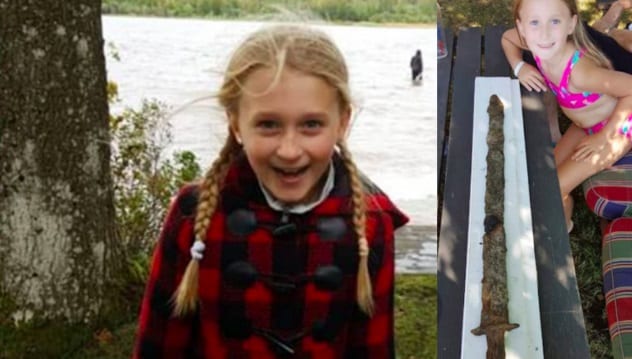
An eight-year-old girl earned the moniker of “Queen of Sweden” after pulling an ancient sword out of a lake in Jonkoping County, drawing parallels to the story of King Arthur and Excalibur.
Last summer, Saga Vanecek was playing outside her family’s holiday home near Vidostern Lake. She was throwing sticks and stones and skipping them off the water.[10] A drought had significantly lowered the level of the water, thus bringing to shore items that have been submerged for centuries. Saga picked up one stick out of the mud but soon realized that it had a handle and was covered in rust. She knew she had found a sword and went to show it to her father.
The sword was around 1,500 years old, predating the Viking era. It was 85 centimeters (33 in) long and came complete with a scabbard made out of wood and leather. Since then, archaeologists made their way to the lake and also found a brooch from the same time period. As for Saga, the locals now refer to her as the “Queen of Sweden” after being handed the sword by the Lady of the Lake.
Read more upbeat stories you might have missed from September 30, 2018 and September 23, 2018.








